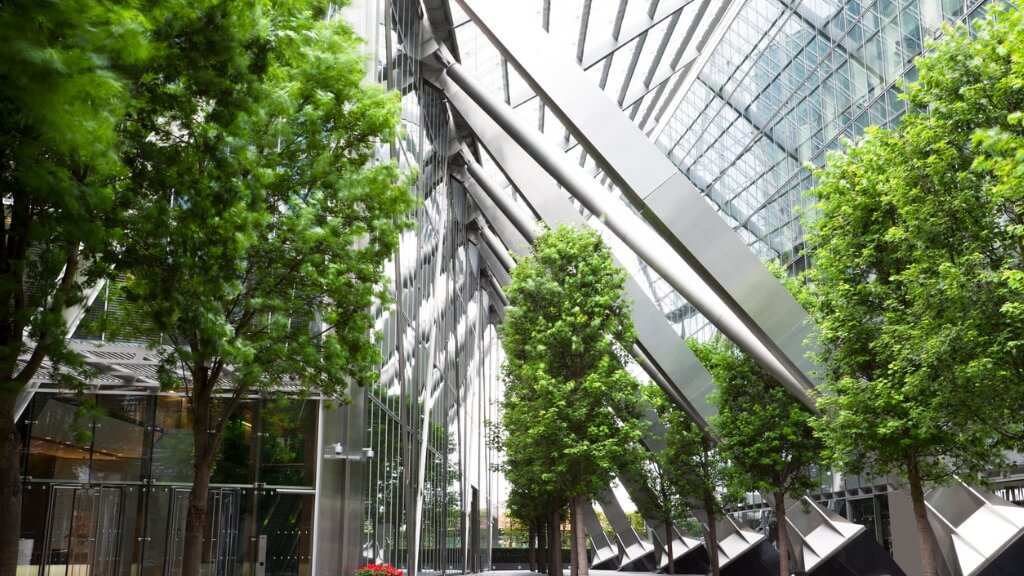The power of a company’s eco-credentials is quickly evolving from ‘good PR’ to a huge influence on corporate performance.
The Increasing Profitability Of Green Choices
The power of a company’s eco-credentials is quickly evolving from ‘good PR’ to a huge influence on corporate performance.

The efforts to mitigate an organisation’s environmental impact present massive opportunities for the bottom line and will soon make the difference between business failure or success.
How? You’d struggle to find someone not exposed to today’s environmental activism, which is only gaining momentum.
The sense of responsibility felt by businesses to modify their products, services and infrastructure around supporting rather than impairing this movement is being increasingly mirrored by a similarly aligned consumer mentality on the (green) choices they are empowered to make.
Consumers are now more aware of the impact of their purchasing choices than ever before, so it’s no surprise that a company’s green policies are rising up the corporate agenda.
Our world’s deepening environmental problems should be treated by all manufacturers as issues of the highest priority. Politics comes and goes like an empty wind-blown crisp packet, but the environment is a challenge not only for our generation, but the generation after and the generation after that.
Original equipment manufacturers (OEMs) should ensure their eco-considerate products are sustainable throughout the full life-cycle, to expand their environmental impact mitigation efforts beyond their doors.
This will enable product users to raise their own eco-credentials and put OEMs in the driving seat of green change.
At the same time, manufacturers need to share eco-accountability with our resellers and other partner organisations, as those not making sustainability a key feature in their customer outreach today will look like a fish out of water tomorrow.
Measures to invoke change now, however marginal, will only magnify in importance for tomorrow, and the phrase ‘we’re only as strong as our weakest link’ comes to mind in analysing just how green is the infrastructure we work in.
There is a growing public demand and expectation that has become the driving force pushing companies to adopt the environmental agenda: 86% of consumers say companies should address urgent social and environmental issues.
Meanwhile, almost two-thirds (62%) of young consumers admit they would reconsider their purchasing decisions if brands better communicated environmental impact, whilst 62% would stop using a brand if it was found to be detrimental to the environment.
According to the World Economic Forum, a quarter of a company’s market value is in its reputation, making it vital for businesses of all sizes to ensure a solid CSR (corporate social responsibility) outreach, and top of the CSR agenda right now is sustainability.
For manufacturers, that comes down to selling products and services that are eco-conscious at every stage of their development life-cycle, from beginning to end and beyond that.
The challenge for companies lies in doing this without compromising on the benefits their product or service has for the customer. But is it possible for businesses to transform the way their customers work whilst minimising their environmental impact and raising their operational efficiency and productivity?
The key in all of this is adaptability, and it must come from the very top.
If the C-suite recognises sustainability not as an obligation, but as an opportunity to innovate and something to shape their business framework around, they will encourage not only the rest of the company to follow in their footsteps, but the rest of the industry as well.
Best practice in sustainable business infrastructure will be given more room to grow, and we will have adapted to the pressing need to protect the environment without having to compromise on quality or profitability.
A brilliant strategy for organisations to take is to adopt the Sustainable Development Goals (SDGs), as defined by the United Nations, at every stage of the life-cycle of a product or service.
This will encourage businesses to look hard at the current social issues that have the power to influence positive changes and to develop new solutions, products and services that address these growing problems.
Among other targets, the SDGs challenge businesses to create new products and services with advanced technology that warrants decent working conditions and economic growth, as well as contributing to the environment through products and services and aligning their internal operations with global social trends.
As for the latter, reviewing current business practices is a great start to identify the first small steps an organisation can take towards an eco-friendlier future.
Rather than beginning to develop new solutions, taking stock of the ways the company uses energy, water and how it manages can be a more manageable starting place in reducing the environmental impact.
In an office environment, decisions such as the IT choices are directly linked to the environmental footprint as well as employee productivity.
For example, switching a printer can reduce expenditure and save time, whilst helping reinforce a business’ commitment to environmentally-friendly processes.
It’s estimated that managing office equipment effectively can reduce the overall energy consumption of an office by up to 70%: selecting the right printer can form a key part of this.
However, it’s important to settle on whether an inkjet or laser solution is most suitable. The case for inkjet over laser is so strong that if every business in the UK switched to business inkjet printers, it would save enough power to run at least 60,000 households.
These internal changes will then empower companies and their employees to refocus on the next stages of the sustainable transformation.
With a reduced local environmental impact, businesses can begin to look beyond their own backyard and encourage similar changes in their industry, supply chain and even the customer base.
Whilst the benefits of sustainability to the UK’s environmental footprint – as well as the wider world’s – are clear and myriad, businesses themselves stand to gain advantage from CSR efforts too. This includes:
- Improved brand image. Encouragement and practice to conserve resources not only increases brand awareness, but also penetrates at a deeper level to employees, their families and beyond. However, the opportunity to enhance brand image is lost if the company doesn’t do as it preaches.
- Increasing productivity and reducing costs. Development of sustainable business practices lends itself to efficient operation that streamlines effort and conserves resources, in turn enhancing employee productivity and reducing cost.
- Making shareholders happy. Not only can sustainability be used to lower costs, but it can result in increasing profit. A study by Deutsche Bank revealed that 89% companies with high ratings in environmental, social and governance factors outperformed the market in medium and long-range terms.
- Stirring up innovation and creativity. In being faced with the challenge to improve sustainability, business leaders are able to reframe old problems in new ways. This generates more creative thinking beyond initial requirements and opens up opportunities to find more points of improvement.
Ultimately, a company’s commitment to environmental sustainability can inspire positive change and innovation that delivers on business goals. In this way, making greener choices is a no-brainer for businesses and manufacturers of all shapes and sizes.
Daniel Quelch is CSR & sustainability manager at Epson UK.
Thanks for signing up to Minutehack alerts.
Brilliant editorials heading your way soon.
Okay, Thanks!

